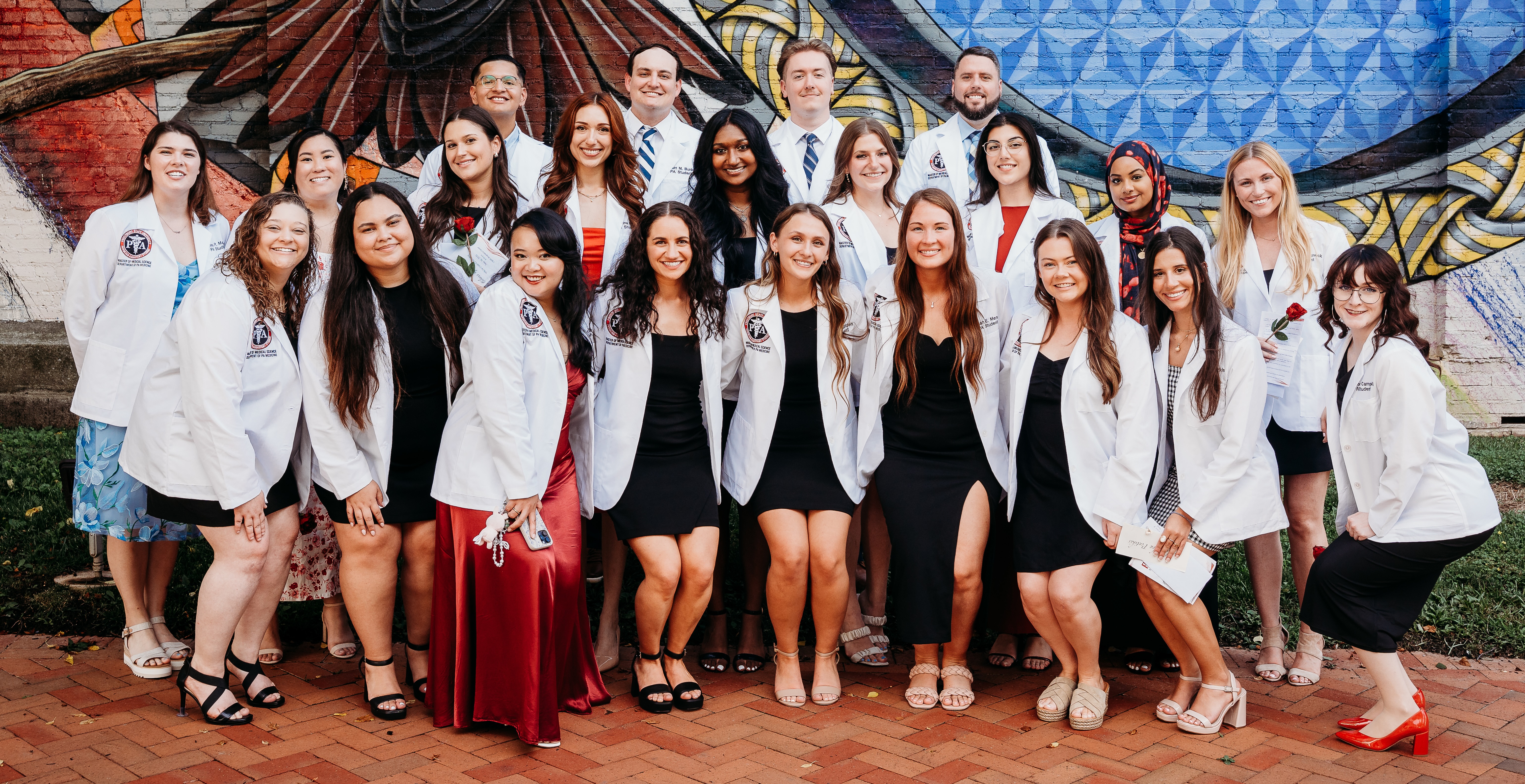Mission, Vision, and Goals
Program Overview
The Master of Medical Science in Physician Assistant (PA) Studies Program at Frostburg State University (FSU) is a professional degree program intended to prepare students academically and professionally for responsibilities, services, and leadership as a Physician Assistant. This graduate education program consists of two phases spanning 24 months to include intersessions and summers with a total of 117 credits. Phase I (didactic phase) represents the pre-clinical year and spans the first 12 months, representing 68 program credits. Phase II (clinical field education phase) represents 49 program credits including ten diverse supervised clinical field experiences (Supervised Clinical Practice Experience or SCPEs) and a four-credit summative capstone course over a period of 12 months. Categorical learning domains include human anatomy, basic medical sciences, clinical medicine, clinical assessment and diagnostics, clinical patient care skills and interventions, professional development, research, and multiple field practice experiences.
Frostburg State University is the program's sponsoring institution and the program operates in the USMH Agnita M. Stine Schreiber Health Sciences Center in Hagerstown, Maryland. Our learning space and equipment is state-of-the-art and prepares our students well to meet our mission.
Program Mission
Frostburg State University's Physician Assistant Program educates students to deliver compassionate, patient-centered care through interprofessional teams grounded in best practices. Our graduates excel in serving rural and underserved populations in the Western Maryland region, demonstrating inclusiveness, outstanding communication, patient advocacy, and dedication to community improvement.
Program Vision
Our vision is to develop Physician Assistants who lead positive change in Western Maryland's healthcare delivery by combining clinical excellence, community engagement, and innovative problem-solving to create lasting improvements in our region's underserved communities.
Program Goals
Goal 1: Graduates demonstrate they have the necessary core medical knowledge to enter clinical practice.
Metric:
- First time PANCE passing rate meets the national average.
- All students will pass PAEA End of Curriculum Exam within one standard deviation of the mean.
Goal 2: Matriculate and graduate students from Healthcare Professions Shortage Areas and Medically Underserved Areas.
Metric:
- Student entrance characteristics – HPSA/MUA (goal 30%)
- Student graduation characteristics – HPSA/MUA (goal 30%)
Goal 3: The program will matriculate and graduate individuals from disadvantaged backgrounds.
Metric:
- Matriculate and graduate bilingual students ≥ 20%.
- Matriculate and graduate first-generation students ≥ 20%.
- Matriculate and graduate students at or above the Maryland census data for race and ethnicity.
Goal 4: Prepare graduates to meet the healthcare needs of rural and medically underserved populations.
Metric:
- All students will have 30% or more of clinical practice experiences in rural or medically underserved clinical sites.
- 30% of graduates will have their first job in rural or medically underserved areas or populations.
Goal 5: The institution will invest in the faculty, staff, technologies, and facilities that will enable us to achieve our mission and goals.
Metric:
- Maintain regional and program continuing accreditation.
- Total budget meets or exceeds the national average compared to similar programs.
- Student to Faculty ratio meets or exceeds the national average compared to similar programs.

